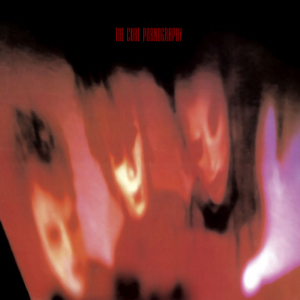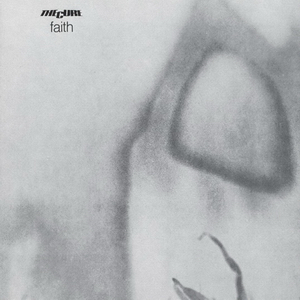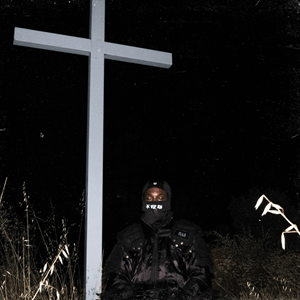ly's guide to alt fashion on a budget
If you're here you probably know this already, but "alternative fashion" (more on that later) was always meant to be on a budget. The all black outfits of goths are not just black as a reaction to '80s consumerism (though that's part of the reason), but also because it's easier to dye everything black than it is to thrift a bunch of mismatched pieces. The page has both a "how to find the stuff" section and a diy section.

what even is alt fashion?
Good question. When I say "alt" I use it not to call back to some tiktok view on alternative subcultures, but to highlight the similarities between certain styles (80s goth, punk, 90s goth, emo). It goes without saying that it's focused on, for lack of a better word, "dark" styles. The diy ethos also has more in common with 80s goth and punk, but some of these can be applied to the more commercial styles as well.
note: i may use "subculture" and "style" interchangeably. that is because nowadays alternative subcultures are not as strong; there are "alt" groups online and offline, in which you will find people whose styles resemble various subcultures of times past. at least, that's my experience
how to find the stuff
The first place to start is, obviously, the thrift store. Not only that, but street markets, flea markets, your grandma's house. Find the cheapest options you have that are not fast fashion.
Now, here's an important part: before you leave the house, try to get an idea of what you want. Unlike the goths of yore, you have an enormous database of fashion at your fingertips. Find keywords that lead you to something you want to achieve and take note of what they wear. Is it long skirts? Loose shirts? Tight pants? Cardigans? Leather jackets? Denim? Boots? What are the shapes you'd like to see on yourself? What accessories complete the look? Make a list of basics, or staples, that you're gonna wear with multiple outfits. Never buy something that can't be worn with multiple things: even a dress must look good with more than one pair of shoes (and if you can layer with it, all the better). Just remember not to copy anyone's entire look (this includes makeup).
As you go through the pictures, a few more extravagant pieces may catch your eye. You may be able to recreate some of these yourself! Adding studs, embroidering, distressing, these are all things that are very achievable at home. You may even sew on straps or details. Research the modifications you'd need to do and think of whether they're achievable.
Once you have your list, it's time to hit the stores. At thrift stores, locate the colors you want to wear (if it's not black I won't judge), and go through the items there; at street markets, avoid expensive stalls unless they have something you really like. Dig through the bargain bin, look at the accessories. Don't write off that 1 euro shirt that seems "too basic" until you've considered how you could diy it.
Other methods of acquiring pieces, as mentioned before, could be relatives (a lot of grandma clothes can be recontextualized if they're black or dyed black, just think of cardigans), friends, your own old clothes. If you're shopping online, I'd suggest first looking into brands you like rather than going by arbitrary labels. Even brands sold at EMP or Hot Topic might be accessible if the thrifting gods shine on you.
Alternative fashion is more forgiving than mainstream fashion when it comes to fitting and visible modifications, but you should still avoid getting clothes that are too tight unless you know how to modify them; also consider how they would fit over the layers you intend on wearing. As for bigger sizes, I suggest avoiding taking too many things for larger sizes if you're thrifting, as an act of kindness toward the people who actually fit them. This obviously doesn't apply to hand-me-downs. A note on jackets: as with mainstream fashion, check whether they fit your shoulders before checking the length. They can be shortened, but modifying the shoulders is often not worth the hassle.
building a wardrobe: a personal example
These are things that I feel make it very easy to put together outfits that give the vibe I like. There's a bias of how my style leans, but you can see how ordinary items work perfectly, especially for old school looks
- black jumpers: baggy or tight fitting, knit over smooth-textured, thumb holes for bonus points.
- jackets: again, either very baggy or very tight, especially if leather; coats (especially big black coats and frock coats) also work
- dress shirts: i personally avoid plain black shirts with no layers for obvious reasons, but you can use white shirts under a jumper for a point of contrast, or various dark colors that aren't black (especially shades of red and purple)
- shirts: band tees, either bought or handmade, graphic tees with horror iconography, text, or a plain one.
- trousers: skinny cargos, extra baggy cargos, "grandpa cut" black corduroy, black jeans
- skirts: i rarely wear them for safety reasons, but they can be layered with trousers if you're wearing a visually busy outfit. long, flowy skirts are best
- shorts: for the hot season, black distressed shorts work perfectly; cargos or baggy under-knee shorts also work
- shoes: combat boots, pointy boots
- gloves: fingerless wool or cotton gloves, muscle warmers with a thumb hole cut in, lace gloves
- pendants: bats, daggers, snakes, ankhs, crosses and rosaries, yggdrasil. silver is easier to pull off than gold, but no rule says you can't use gold. if you need space to fill on your chest
- belts: either black or studded, can also be worn hanging off one hip. note gerard way's iconic bat buckle
- misc: collars, raccoon tails, ushankas, patterned tights, hair claw clips
miscellaneous notes
Black and white stripes are currently associated with e-kid looks, but before that they have been associated with emo, as well as '90s goth. If you wish to avoid the e-kid connotation, push the rest of your outfit towards a distinct, coherent visual identity, maybe inspired by Johnny the Homicidal Maniac or other stripe-bearing icons. Avoid makeup or accessories associated with e-kids (for example, tennis skirts and athleisure). Choosing other palettes or stripe widths may also help.

do it yourself
Now, a few ideas for simple clothing modifications that could elevate otherwise basic items.
cut something off
Cut off the fingertips of black gloves. Cut a thumb hole in the sleeve of a hoodie. Cut a thumb hole to turn leg warmers into arm warmers. Cut the sleeves off a shirt that doesn't fit you anymore and wear it in the summer.
Most fabrics will fray. Unless that's the effect you want, or in the case of knits or low quality fabric, it will be necessary to finish the edges. You can use fabric glue or sew them. Here's a simple sewing tutorial for just that.
bleach it... beige
Bleach painting is easier than it sounds, but you need to exercise a bit of caution regardless. You will need a shirt (or whatever you wanna paint on), bleach, a brush or brushes, soap or chalk, plastic cups you will throw away, plastic bags, sheets, or wrap, a mask or bandana, rubber gloves, and a stencil (optional). Note that pure cotton fabrics work best for this, as synthetic fabrics and blends will bleach unpredictably or barely at all.
A few safety precautions: try to inhale and touch as little bleach as possible. Work in a well areated environment. Keep a bleach neutralizer on hand (bisulfite, thiosulfate, hydrogen peroxide). Lay plastic on the surface you want to paint on to protect it, then a layer inbetween the part you wanna paint and, say, the back of the shirt, or the other side of the pant leg.
Begin by drawing the design on the fabric with chalk or soap. Put on the gloves and the face covering. Use one cup for a mix of bleach and water and one for just water. Don't paint with a dripping brush unless you want muddier lines. The fabric will not lighten immediately, but depending on the proportions and the fabric it might not bleach much on the first go. Note that bleached fabric is not white, but light brown to reddish. If you need a stronger bleach, pour some bleach in a different cup (or add it to the current one) and add very little water.
Once you're satisfied with the results, apply a bleach neutralizer and wash the shirt by itself (by itself in a plastic bowl if you want to save water). Do not wear the shirt before washing it and do not let it sit with bleach, even neutralized, for too long, as the fabric might get damaged.














 Lydia Deetz
Lydia Deetz banette
banette

















